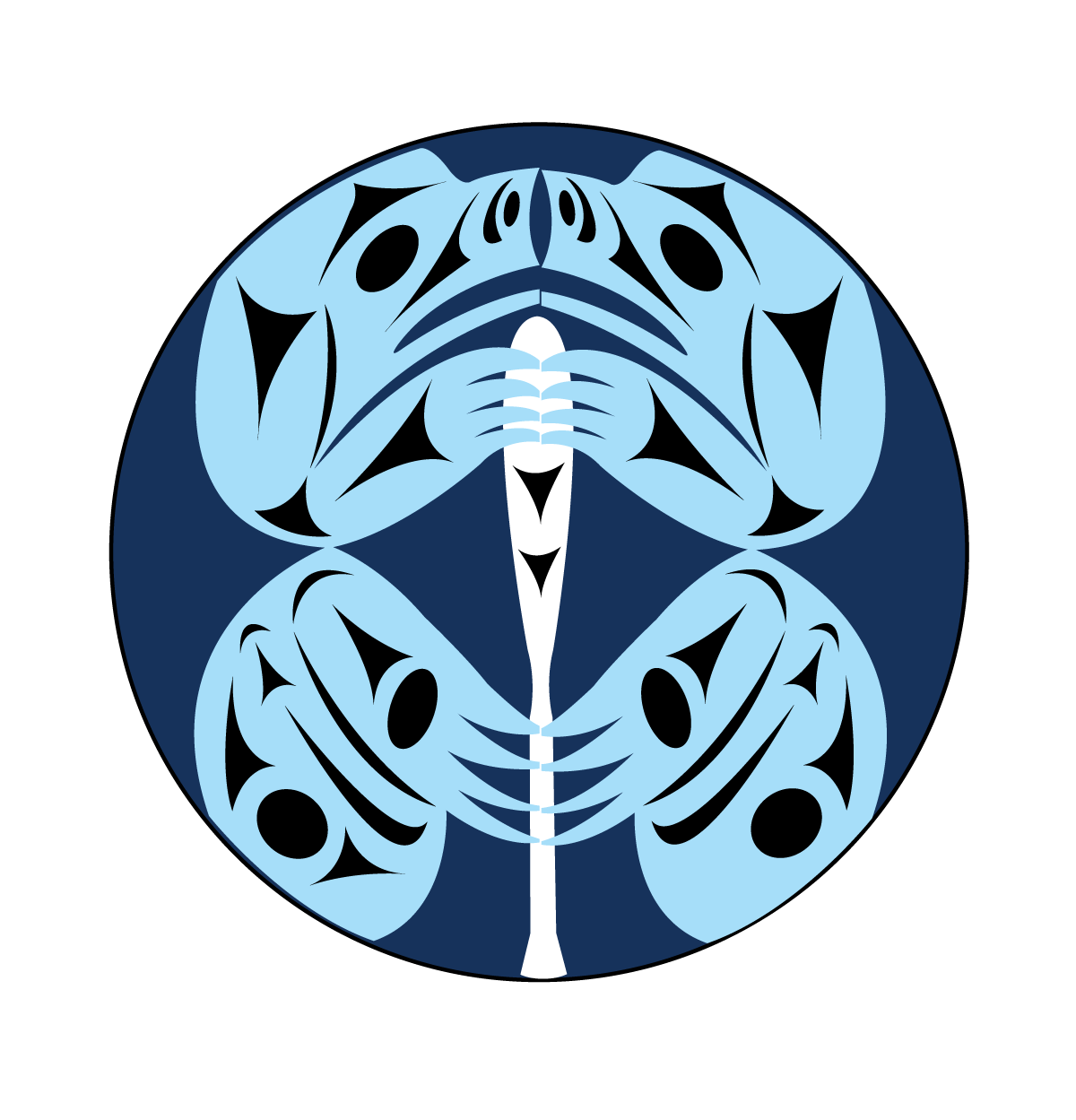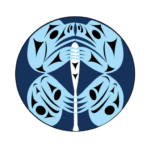k’eyicapx. le.pat (diitiidʔaaʔtx̣)/DḴÁ¸IȽĆ (SENĆOŦEN) (Salal)
Our logo tells the story of who we are and what we do. Our design is within a spindle whorl, one of the more prominent art forms of Coast Salish people. The mother bear is up in a protective position as our mothers, grandmothers and aunties are the first to look after, teach and protect our children. The image can also be viewed as two bear cubs connecting at the center. This symbolises the importance of family and family connections. The paddle is the symbol of our journey and moving forward together. Finally, the colour blue was gifted by XA’LS (Creator) to ĆIYE (the blue jay) and represents hard work and the commitment of each community to this work and journey.

MOTHER BEAR
The main symbol is a mother bear. The mother bear is a fierce protector of her children. Our mothers fight hard every day to provide for their children. Many of our traditions and especially the teachings for raising children are passed down through our matriarchal lines. Within families that need support, grandmas and aunties are the ones most likely to step forward to care for their nieces, nephews and grandchildren.
BEAR CUBS
The image can also be viewed as two bear cubs, following traditional design elements of a spindle whorl of one side mirroring the other. The two bears coming together at the centre also symbolizes family connections and the unity within the South Island. The colour blue was gifted by XA’LS to the blue jay and represents hard work.
THE PADDLE
Another symbol is the paddle. The paddle was necessary to travel by canoe, the main way coastal peoples travelled to obtain food, to stay connected to relations and stay connected to the land. In times of conflict, it could also be used for protection and for dances in ceremony. The symbol of the paddle also represents moving forward and working together.
The Artist:
We hold our hands up in gratitude to Coast Salish artist Chris Paul, who designed our SIIA logo. Chris is from W̱JOȽEȽP (Tsartlip) in W̱SÁNEĆ (Saanich) and has worked, studied and created as an artist for more than 25 years. Chris’ artwork is on public display throughout the South Island and in private collections throughout the world.
